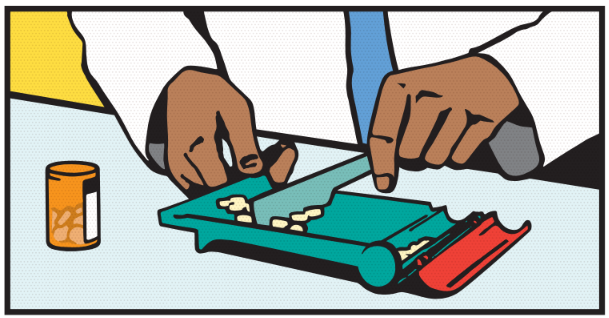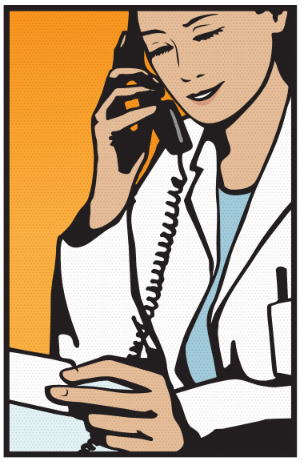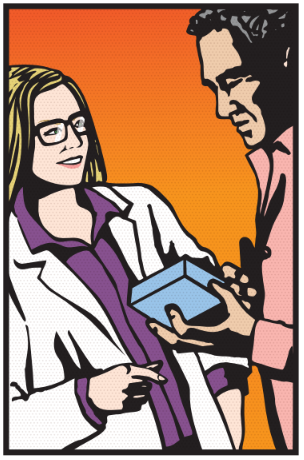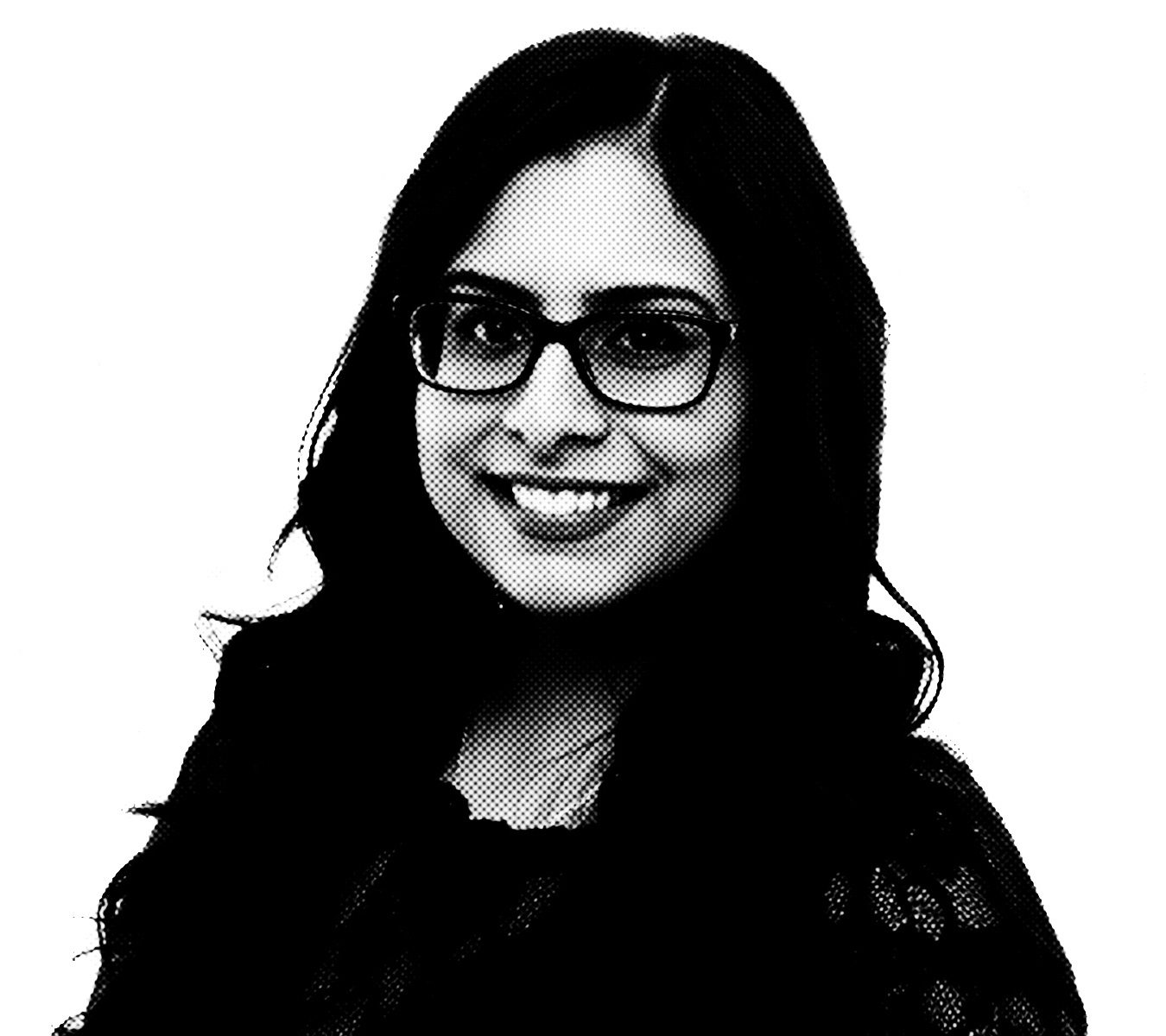
While many pursue careers in health care with the wellbeing of patients in mind, Margaret Lu’s primary motivation is more specific than that — happiness.
“It’s really hard to have your maximum happiness when you’re sick,” says Lu.
She started out in research, earning an undergrad degree in immunology from McGill University, before a change of heart redirected her focus to pharmacy.
“I thought, ‘Am I going to pipette forever?’” notes Lu. “Research is so far removed from what people get in the end. I realized I was more interested in face-to-face health care.”
The Burnaby native left Montreal’s frigid temperatures in favour of Vancouver’s mild climate and, in September 2015, became one of the first students to enter the University of British Columbia’s (UBC) newly launched Entry-to-Practice (E2P) PharmD program. Four years later, on May 30, 2019, Lu and 192 of her classmates are making history, as the first pharmacy students in B.C. to graduate with the E2P PharmD distinction.
While the doctor of pharmacy designation has been recognized by many countries around the world — some for many decades and others within the last decade — Canada has only recently made the shift to the standardized title. Following international standards, in 2010, the Association of Faculties of Pharmacy of Canada and the Association of Deans of Canada committed faculties to replacing the baccalaureate pharmacy curriculum with the Doctor of Pharmacy program by 2020. The UBC Faculty of Pharmaceutical Sciences began planning for the program’s transition shortly afterwards, officially launching the new program in September 2015.
Currently, seven Canadian universities in addition to UBC offer PharmD degrees, including the University of Alberta, University of Saskatchewan, University of Toronto, University of Waterloo, Université de Montréal, Université Laval and Memorial University of Newfoundland. The University of Manitoba will commence its PharmD program in September 2019 and Dalhousie University will begin in September 2020.
It’s not the degree that’s going to change practice. It’s going to be the people that come out of the degree.
— Margaret Lu

With a strong emphasis on clinical training, critical thinking and practical application of pharmacy knowledge, the PharmD program is designed to not only address pharmacy’s increasing complexity but to enhance future opportunities for the profession, says Kerry Wilbur, Executive Director of UBC’s E2P PharmD program.
“If I were to characterize some of the demands of a career in pharmacy, three I might choose include an increasingly diverse patient population (and workforce) in British Columbia, the need to keep up-to-date with best practices in patient treatment and new drug therapies and the pull of administrative responsibilities,” notes Wilbur. “The campus-based PharmD curriculum is purposeful in terms of its delivery of information or concepts and then repeated opportunities for students to practice application of these knowledge and skills in various simulated situations.”
Examples include adoption of cultural humility and safety programming, participation and leadership in interprofessional education and integration of evidence-based practice course series and tutorials, notes Wilbur.
The program’s first cohort of students has been involved in providing feedback throughout the duration of the program, says Lu, including through in-class surveys, student representatives and faculty reviewers, who regularly learned alongside students to better anticipate students’ future needs and questions within the degree’s modular-based learning system.
“We were blasted by all of this information,” says Lu, “but they’ve provided us with more alternative avenues of practice and alternative industries we could pursue, given our education. It’s going to be our responsibility to make those opportunities happen.”
Despite the increasingly stringent admission requirements, in which prospective students must complete two years of prerequisite studies totaling 60 credits — compared to the bachelor degree’s prerequisite of 30 credits — and the mounting tuition fees — $430 per credit instead of $265 — Wilbur says the faculty’s number of applications have remained relatively consistent over the past 10 years.
PharmD grads agree the higher tuition — which Wilbur notes is in line with universities across the country — is simply an unfortunate reality of the revised program.
“There is definitely a lot of financial stress,” says Lu. “A lot of us took out loans and the wages will not necessarily be higher for us. But I think most college grads are stressed about their finances.”
Student Voice: Jenny Jiang

“I am excited to see how my fellow classmates in the PharmD class of 2019 work to push for an expanded scope of practice for pharmacists. We have been a very vocal year when it comes to advocacy for the profession, and I believe we will be able to prove to patients and other prescribers that we are capable of being well-rounded clinicians. Like many of my peers, I have an enormous amount of passion for pharmacy and the communities that I serve. I’m looking forward to being an advocate for not only my profession, but all my patients’ health.”
Fellow PharmD grad Joey Bhullar is using the higher costs as a further motivating factor to work as a floater in community pharmacy while finishing school, paying off debts while also gaining real-life experience. “I know my first job is not going to be my last job.”
For Stephanie Leung, another PharmD grad, she says while there are certain parts of the new program’s curriculum that would entail a higher tuition, the additional practicum placements can be burdensome.
“I wish there were more support from the school when it comes to placements outside of the Lower Mainland. There can be additional financial stress.”
The program does take students’ preferred geographical rankings for practicum course into consideration, but it’s a delicate balance, says Janice Yeung, the Director of the Office of Experiential Education at the Faculty of Pharmaceutical Sciences.
“Placements are a vital component of our students’ learning experience and over 1,500 placements are facilitated by the faculty each year. While we can’t guarantee student preferences due to the complexity of scheduling multiple practicum courses across all four program years, we take ranking information into careful consideration.”
Trading the classroom for the workplace

With the introduction of a new standardized title and more advanced education in B.C. pharmacy, there have been questions on whether the current pharmacy model will meet the enhanced expectations of pharmacy’s newest grads.
Rod Shafer had those same questions 15 years ago. The former CEO of the Washington State Pharmacy Association, Shafer witnessed Washington pharmacy’s transition to the PharmD designation in the early 2000s.
“There was a little bit of angst about the fact that what the students were being taught — treatment decisions, more time with their patients, input on their care — was not the reality of what pharmacy practice was,” he says. “In reality, it was still about filling prescriptions as fast as they can. I don’t know if [the new title] made a huge significant difference in the practice of pharmacy at the time.”
But regardless of the extra cost and time associated with enhanced education, pharmacists did enjoy the shift to the new title of doctor of pharmacy, Shafer says.
“You feel more competent and more equal with physicians,” he says, adding that graduates today can use the designation as a mechanism to push the profession forward. “I think the profession now is going to have to deal with the expectation that these students have and the tension there will be when they begin working in actual practice.”
Today’s grads know it’s not as simple as a title change.
“It’s not the degree that’s going to change practice,” notes Lu. “It’s going to be the people that come out of the degree. It’s not like we’re going to suddenly take over. There’s the microcosm of my patient interactions and the macrocosm of how my and future classes’ interactions play into the public’s perception and politics, ultimately changing remuneration models. It’s going to be a lot of working together to build new frameworks to find a way to thrive in the current landscape of Canada.”
Leung plans to take her training back East. Not only does she love the vibrancy of Toronto as a city, she hopes to one day work in government and public policy, in order to help a larger number of patients nationwide. While she hopes to make connections and build her resume in an area that leads to change, she also knows it will take time.
“There is change happening within the pharmacy world, and unfortunately with change, it happens very slowly,” she says. “The fact that there is a new program, it’s already a big step forward. There is potential, but we will have to be patient.”
PharmD graduate Taylor Jameson plans to return home to his native Okanagan to work in community pharmacy and apply the resources and skills he has learned to his daily practice: “I’ll get out of it what I put into it. If I’m a staff pharmacist in a busy setting, I would try my best to zero in on opportunities to do more.”
Wilbur notes these concerns surrounding scope of practice are not necessarily new to the E2P PharmD graduates.
“When I graduated from my pharmacy program 20 years ago, these very same concerns were being expressed at the time,” she says.
“Nevertheless, I am certainly not advocating complacency. The pace of change to realize the potential of what practice can become — like the practical adoption and reimbursement for expanded services — is sometimes slow. However, progress is being made and it is the expectations of all pharmacy program graduates, from all academic institutions, year after year, that frame the ongoing dialogue surrounding the positive changes that are needed to move the profession forward.”
Student Voice: Amber Mann

“I am excited to be part of the first Entry-to-Practice PharmD graduate class of UBC! With that said, more and more universities across Canada have already, or are in the process of switching to this kind of program. I think this change is part of a changing role of pharmacists in our health-care system. Our program has equipped us to apply clinical skills despite our practice setting. Similar to the BSc program, most of my classmates (including myself) will work in community pharmacy. I feel we will be better prepared to take on an expanded scope, and provide evidence based care.”
Integrating a clinical perspective into patient care
B.C. pharmacy chain London Drugs is excited about the clinical perspective PharmD graduates will bring to pharmacies and patient care. This year alone, the company has hired 20 new E2P PharmD grads from UBC, the University of Alberta and the University of Saskatchewan — double the amount of new grads normally hired, says Pharmacy Operations Manager Jerry Dhaliwal.
“I know that these graduates are going to have a lot more tools to offer,” he says. “But the traditional role is still a big part of pharmacy practice. It’s going to be slow; it’s not going to be an overnight thing where they’re using all of their skills.”
Dhaliwal says that, in addition to regulation changes such as prescribing for minor ailments and access to laboratory results, the profession needs more pharmacy technicians to help free up pharmacists to focus on more clinical-oriented services.
He suspects as more PharmDs begin practicing, more pharmacists who graduated with bachelor’s degrees will consider upgrading their title through a professional bridging program.
Student Voice: Taylor Jameson

“As a graduate of the PharmD program, I believe that it will be up to not only me and my fellow PharmDs, but my colleagues already working in our province’s communities with years of experience to continue to advocate for the profession and prove to the public at large that we can do so much more than count pills. We must all work together to show that we are more than capable of playing a more involved role in the management of our patients’ medications that goes beyond simply dispensing and talking to patients about side effects. Of course, these are very important, intrinsic, well established roles of a pharmacist, but I believe that by fully using our current scope it will help shift the perception that the public and other health-care providers have about pharmacists being pill counters.”
For pharmacy manager Andrea Silver, who graduated in 2015, the shift to PharmD was “only a matter of time,” considering its prevalence globally and in the United States. The title change won’t impact her current practice, she says.
“Yes, the coursework is integrated in a new way, but the theoretical knowledge is still going to be very similar,” she says. “In the end, the title doesn’t really make a big difference in the community. Every one of my patients calls me Andrea.”
Responsible for initiating many clinical services at her Victoria-based Heart Pharmacy IDA, such as an in-home medication adherence program, diabetes coaching and the creation of an online health information resource for practitioners, Silver says the opportunities for new grads are limitless.
“This is one of the most exciting times to graduate from pharmacy,” she says. “Lots of independent pharmacies are looking to expand their clinical scope. The demand for clinically-oriented practice and services is only just beginning to boom.”
Silver suggests getting out of the Lower Mainland to practice in more rural areas: “As long as you integrate yourself well in the community, you can practice to a greater depth.”
Colleen Hogg seconds that notion. Pharmacist and owner of the independent Cove Pharmacy on Quadra Island, she’s also a fourth year preceptor for PHRM 473, a Select Advanced Pharmacy Practice Experience practicum, for which students are able to rank their preferred practice setting. To be a pharmacist in a rural or remote area takes confidence and quick thinking, she says.
“We get a lot more therapeutic interventions, we work a lot more collaboratively with doctors,” she says. ”It takes a specific person with the right attitude to work in rural pharmacy. Because you’re often the only one there providing services, they want you to do everything really well.”
Welcoming her first set of E2P PharmD students this past year, Hogg was pleasantly surprised with their confidence and willingness to stand behind their decisions. She feels the E2P PharmD program is the right step toward allowing people to believe that pharmacists can practice to the full extent of their abilities, she says.
PharmD graduate and former BC Pharmacy Association Ambassador Amber Mann is ready to enter the world of pharmacy. Excited to put into practice the skills she learned throughout the E2P PharmD program, Mann is one of several PharmD grads hired by London Drugs.
While interested in pursuing a role in mental health in the future, she’s happy to start out as a floater pharmacist and gain as much experience as possible for the next few years. While pharmacy has a long way to go to match the scope of practice that pharmacists are trained for — prescribing for minor ailments, interpreting laboratory values, applying new research to practice — she is grateful to have laid the foundation for a bright career ahead.
“I think one great thing that our program has taught us is to prepare for an expanded scope in the future,” she says. “It’s up to us how we advocate for both ourselves and our patients. When a change arises, we’ll be ready to adapt.”
Student Voice: Stephanie Leung
.jpg)
“I’m excited to be a part of UBC’s first E2P PharmD graduating class. We’ve been exposed to and honing a multitude of clinical skills during these past 4 years, and I’m very intrigued to see how we can apply them to our full capacity as a licensed pharmacist in improving patient care. One thing I’m especially looking forward to is the increase in point-of-care testing tools available in community pharmacy. While they aren’t diagnostic tools per se, they will allow us to help triage certain conditions and diseases, and more importantly, show patients how integral and accessible pharmacists are in the health-care system. Another important aspect of our education was our interprofessional sessions. I think we can draw from these workshops to increase collaborations not only within hospital, but also in community to ensure more well-rounded services for patient care.”
